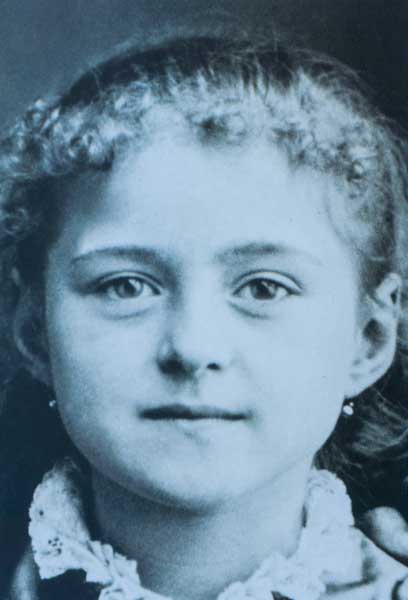

This spoiled little Queen of her father’s wouldn’t do housework. Therese tells us that she wanted to be good but that she had an odd way of going about. When her other sisters, Marie and Leonie, left to join religious orders (the Carmelites and Poor Clares, respectively), Therese was left alone with her last sister Celine and her father. She would find a place between her bed and the wall and in that solitude think about God, life, eternity. Without realizing it, by the time she was eleven years old she had developed the habit of mental prayer. When she refused to give in to their curiosity, they passed the story that she had made the whole thing up. She tried to keep the grace of the cure secret but people found out and badgered her with questions about what Mary was wearing, what she looked like. She saw Mary smile at her and suddenly she was cured. The worst part of it for Therese was all the people sitting around her bed staring at her like, she said, “a string of onions.” When Therese saw her sisters praying to statue of Mary in her room, Therese also prayed. A few months later, Therese became so ill with a fever that people thought she was dying. Her sixteen year old sister Pauline became her second mother - which made the second loss even worse when Pauline entered the Carmelite convent five years later.

Tragedy and loss came quickly to Therese when her mother died of breast cancer when she was four and a half years old.

The five children who lived were all daughters who were close all their lives. The two had gotten married but determined they would be celibate until a priest told them that was not how God wanted a marriage to work! They must have followed his advice very well because they had nine children. Therese was born in France in 1873, the pampered daughter of a mother who had wanted to be a saint and a father who had wanted to be monk. Over the years, some modern Catholics have turned away from her because they associate her with over- sentimentalized piety and yet the message she has for us is still as compelling and simple as it was almost a century ago. The only book of hers, published after her death, was an brief edited version of her journal called “ Story of a Soul.” (Collections of her letters and restored versions of her journals have been published recently.) But within 28 years of her death, the public demand was so great that she was canonized. She never went on missions, never founded a religious order, never performed great works. Yet Therese died when she was 24, after having lived as cloistered Carmelite for less than ten years. Generations of Catholics have admired this young saint, called her the “ Little Flower“, and found in her short life more inspiration for own lives than in volumes by theologians.


 0 kommentar(er)
0 kommentar(er)
